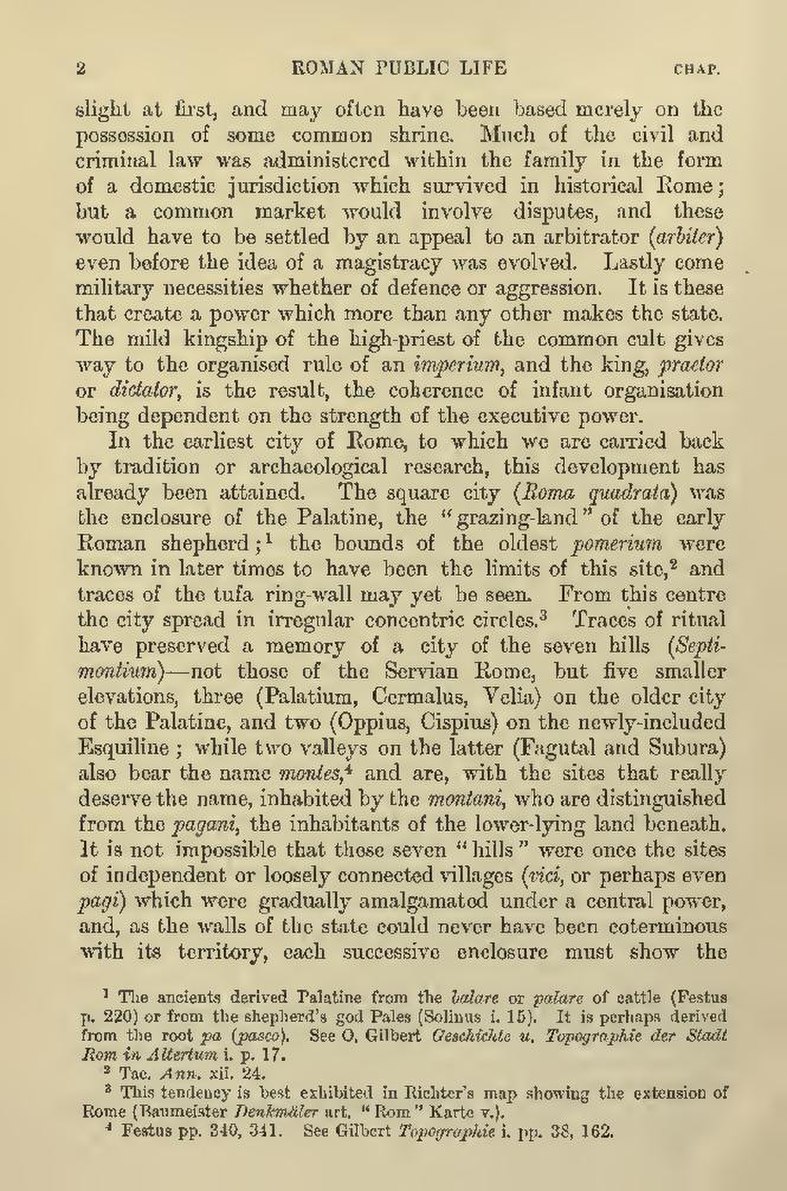slight at first, and may often have been based merely on the possession of some common shrine. Much of the civil and criminal law was administered within the family in the form of a domestic jurisdiction which survived in historical Rome; but a common market would involve disputes, and these would have to be settled by an appeal to an arbitrator (arbiter) even before the idea of a magistracy was evolved. Lastly come military necessities whether of defence or aggression. It is these that create a power which more than any other makes the state. The mild kingship of the high-priest of the common cult gives way to the organised rule of an imperium, and the king, praetor or dictator, is the result, the coherence of infant organisation being dependent on the strength of the executive power.
In the earliest city of Rome, to which we are carried back by tradition or archaeological research, this development has already been attained. The square city (Roma quadrata) was the enclosure of the Palatine, the "grazing-land" of the early Roman shepherd;[1] the bounds of the oldest pomerium were known in later times to have been the limits of this site,[2] and traces of the tufa ring-wall may yet be seen. From this centre the city spread in irregular concentric circles.[3] Traces of ritual have preserved a memory of a city of the seven hills (Septimontium)—not those of the Servian Rome, but five smaller elevations, three (Palatium, Cermalus, Velia) on the older city of the Palatine, and two (Oppius, Cispius) on the newly-included Esquiline; while two valleys on the latter (Fagutal and Subura) also bear the name montes,[4] and are, with the sites that really deserve the name, inhabited by the montani, who are distinguished from the pagani, the inhabitants of the lower-lying land beneath. It is not impossible that these seven "hills" were once the sites of independent or loosely connected villages (vici, or perhaps even pagi) which were gradually amalgamated under a central power, and, as the walls of the state could never have been coterminous with its territory, each successive enclosure must show the
- ↑ The ancients derived Palatine from the balare or palare of cattle (Festus p. 220) or from the shepherd's god Pales (Solinus i. 15). It is perhaps derived from the root pa (pasco). See O. Gilbert Geschichte u. Topographie der Stadt Rom in Altertum i. p. 17.
- ↑ Tac. Ann. xii. 24.
- ↑ This tendency is best exhibited in Richter's map showing the extension of Rome (Baumeister Denkmäler art. "Rom" Karte v.).
- ↑ Festus pp. 340, 341. See Gilbert Topographie i. pp. 38, 162.
